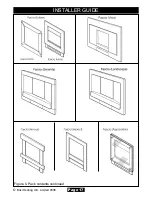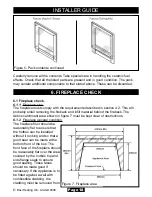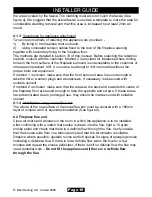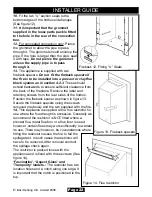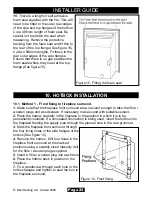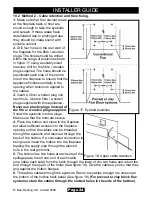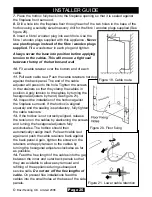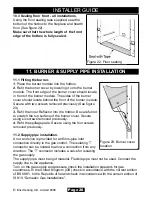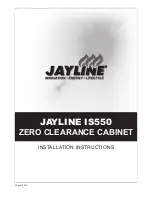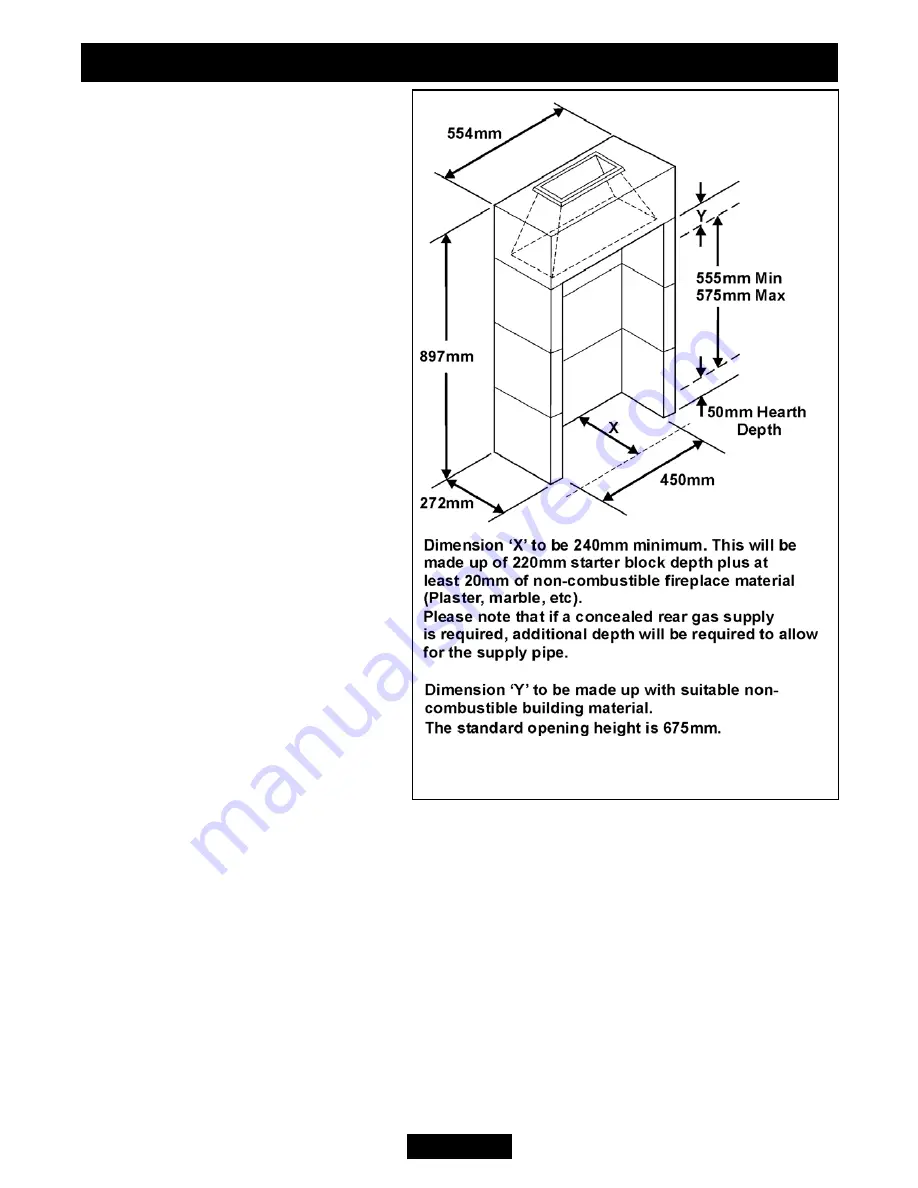
4.2.2
To a fireplace incorporating a
metal flue box complying with the
constructional requirements of the
current edition of BS EN 1856 Part 1
or BS715. The dimensions of the flue
box must conform to those shown in
figure 2.
4.2.3
A precast concrete or clay flue
block system conforming to BS1289
or BS EN 1806 with dimensions as in
figure 3 or using a 05654K1 spacer
kit (Installation Instructions part
number 3003095). BS EN 1806 and
BS1289 recommend that there
should be an air space or insulation
between the flue blocks and the
plaster because heat transfer may
cause cracking on directly plastered
flues. However, generally this
appliance is suitable for installations
under all circumstances unless there
is a history of cracking problems.
Remember that faults such as
cracking may be caused by poorly
built and restrictive flues, e.g. mortar
extrusions, too many bends, flue
heights below three metres,
restrictive terminations etc (See
figure3).
4.2.4
If the fireplace opening is
greater than the acceptable
dimensions given in this guide, do not use the back of a fire surround or marble to
reduce the opening. This may cause cracking of the surround back or marble.
4.3
Suitable flues and minimum flue sizes are as follows: -
It should be noted that, as with many appliances, sharp bends or horizontal runs in
metal flues at the top of the system can be a cause of problems in these types of
installation.
225mm x 225mm conventional brick flue.
175mm diameter lined brick or stone flue.
200mm diameter factory made insulated flue manufactured to BS EN 1856 Part 1
or BS4543.
175mm diameter flue pipe. See BS6461 Part 1 for suitable materials.
Single wall, twin wall or flexible flue liner with a minimum diameter of 125mm. The
Page 11
©
Baxi Heating U.K. Limited 2008.
Figure 3. Precast or clay flue block system
dimensions
INSTALLER GUIDE

















